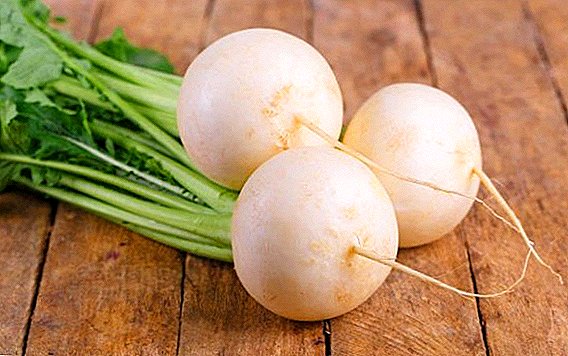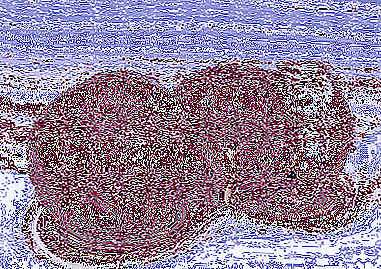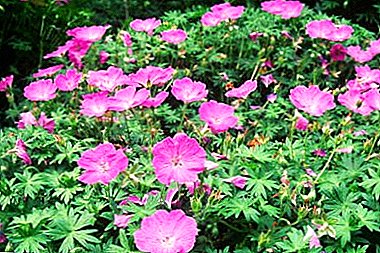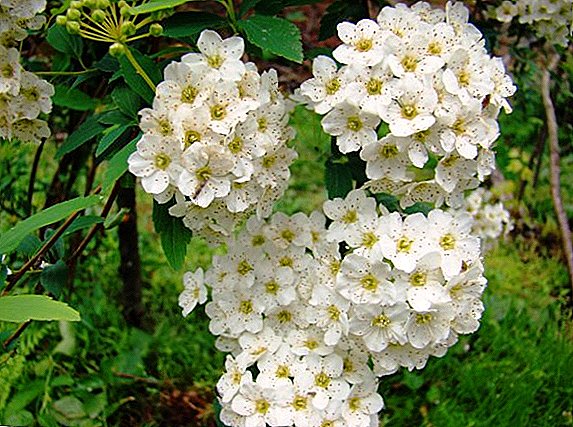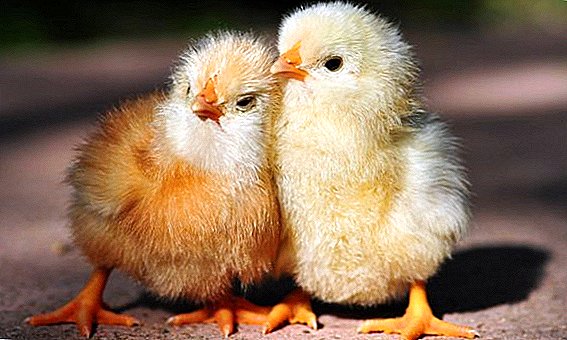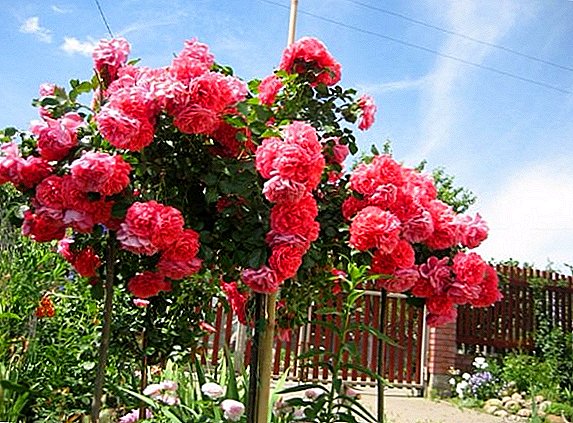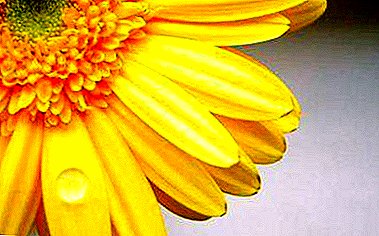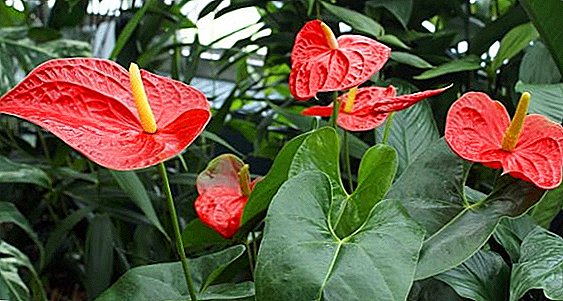
“Kiranda”, which is also called the Chinese Miracle, is an amazing variety of early potato, ideal for regions with hot dry summers. Tubers grow very quickly, the productivity pleases even inexperienced gardeners.
The potato is not entered in the state register, but is well known among amateurs willingly exchanging seed material. Learn all about the potato variety Kiranda - photos, descriptions and recommendations on agricultural technology.
Potato "Kiranda": description of the variety and photos
| Grade name | Kiranda |
| general characteristics | superearly variety with very large tubers, resistant to drought, in warm regions gives two crops per season |
| Gestation period | 50 days |
| Starch content | 12-16% |
| Mass of commercial tubers | 200-250 g |
| The number of tubers in the bush | 20-30 |
| Yield | 115-320 c / ha |
| Consumer quality | normal taste, lightly boiled soft, suitable for frying, salads and soups, does not darken |
| Recumbency | 95% |
| Skin color | yellow |
| Pulp color | light yellow |
| Preferred growing regions | any soil and climate |
| Disease resistance | the variety is resistant to cancer, nematodes, scab and viruses, weakly susceptible to late blight |
| Features of growing | desirable germination and additional watering, in the heat may not bloom |
| Originator | unknown, believed to be from China, possibly GMO |
Complement the characteristics of potatoes "Kiranda" photo:



Characteristics of the root
Potatoes "Kiranda" refers to superearly table varieties. Tubers ripen in 50 days after disembarkation. Such precocity is ideal for the southern regions. When properly dried, the collected tubers are kept well.
Bushes of medium size, moderately sprawling, the formation of green mass is average. The leaves are dark green, medium-sized, simple, with slightly wavy edges and clearly marked veins. The corolla is compact, assembled from large light purple flowers. Flowering scanty in especially hot summer corollas may not form, it does not affect the tying of tubers. Berry formation is low.
The peculiarity of super early potato varieties "Kiranda" - the ability to vary the quality depending on climatic zones and growing conditions. The flesh changes color from cream to yellow, the peel may be denser or quite thin. On fertile soils, the tubers become large and even, on the poor they become shallow, changing shape.
Sort little prone to disease. He is not affected by potato cancer, the golden cyst nematode, common scab. Tubers exhibit good resistance to viruses and fungal diseases, rarely suffer from blight or fusarium, although occasionally fungicides may be required.
"Kiranda" has a pleasant, balanced taste. Tubers are not dry, not watery, gentle light yellow pulp does not darken when cutting and cooking. The moderate starch content does not allow the potatoes to boil soft, the roots can be fried, stewed, stuffed, baked, cooked in deep fat.
Sort suitable for industrial preparation of semi-finished products: frozen french fries, vegetable mixes, or soup dressings.
Origin
 The potato variety Kiranda has an unusual history. The first batch of tubers was introduced to Ukraine in 1993. Planned breeding work on experimental fields in the Donetsk region, the initiator was a large Chinese company.
The potato variety Kiranda has an unusual history. The first batch of tubers was introduced to Ukraine in 1993. Planned breeding work on experimental fields in the Donetsk region, the initiator was a large Chinese company.
However, the project failed, the Chinese left and left the fields with sown material. Part of the potato was harvested by local potato scientists.
The planted tubers yielded a bountiful harvest, which became the basis for the future Kiranda variety. The name of the variety stands for the Chinese Early Davydova (by the name of the scientist who took up the study of potatoes).
Sort did not receive official recognition, it is not included in state registries. However, potatoes are widespread among farmers and amateur gardeners. They actively exchange seed material, continuing Kiranda's triumphal procession through the fields and gardens of different countries.
Advantages and disadvantages
The main advantages of the variety include:
- good taste of root vegetables;
- high yield;
- very early ripening;
- heat and drought tolerance;
- tolerance to adverse weather conditions;
- landing on poor or clay soils;
- seed material does not degenerate;
- resistance to most common diseases;
- the harvest is well kept.
The disadvantages include uneven tuber. Under the bush, in addition to beautiful and even potatoes, they grow hilly or small.
Productivity is one of the main indicators for growing potatoes. Compare this characteristic of the Kiranda variety with other varieties:
| Grade name | Yield |
| Gala | 400 kg / ha |
| Grenada | 600 kg / ha |
| Innovator | 320-330 c / ha |
| Melody | 180-640 c / ha |
| The hostess | 180-380 c / ha |
| Artemis | 230-350 c / ha |
| Ariel | 220-490 c / ha |
| Vector | 670 c / ha |
| Mozart | 200-330 c / ha |
| Borovichok | 200-250 centners / ha |
Features of growing
 Potatoes land in AprilAt this time, the soil stores an adequate supply of moisture. Shrubs are placed at a distance of 30-35 cm with 75 cm row spacing. Humus or wood ash can be decomposed into the holes.
Potatoes land in AprilAt this time, the soil stores an adequate supply of moisture. Shrubs are placed at a distance of 30-35 cm with 75 cm row spacing. Humus or wood ash can be decomposed into the holes.
For the season you need 2-3 times spud planting, forming high ridges. Mulching between rows will save you from weeds.
To increase the yield recommended drip irrigation. If not, it is advisable to water the planting 1-2 times in the usual way. It is possible to increase the yield with the help of fertilizers, preferably organic. Suitable divorced mullein or bird droppings. About when and how to fertilize potatoes, how to make feeding during planting, read in separate articles.
We also bring to your attention useful information about other methods of growing potatoes: Dutch technology, as well as in barrels and bags.
When harvesting should focus on the state of the tops. As soon as it starts to wither, it's time to dig up the tubers. A few days before harvesting all greens is recommended to cut.
After digging, the potatoes are well dried in the border or under a canopy. The harvested harvest is sorted, even medium-sized tubers are sorted for further planting. Seed material is not subject to degeneration, the update does not take many years.
The table below presents indicators of such characteristics as the commodity mass of the tuber and the percentage expression of the keeping quality of potatoes of different varieties, for comparison:
| Grade name | Mass of commodity tubers (grams) | Recumbency |
| Sifra | 110-150 | 94% |
| Serpanok | 85-145 | 94% |
| Lady claire | 85-110 | 95% |
| Veneta | 67-95 | 87% |
| Lorch | 90-120 | 96% |
| The hostess | 100-180 | 95% |
| Labella | 80-100 | 98% |
| Riviera | 100-180 | 94% |
Storing potatoes does not include any complicated activities. It is necessary to remember the rules of storage in the winter, it is good to choose the place and remember the dates.
Diseases and pests
Variety of potatoes "Kiranda" well protected from many dangerous diseases: potato cancer, golden cyst nematode, common scab, verticillus, Alternaria, various bacteria and viruses. Early ripening allows you to harvest to massive outbreaks of late blight. In preventive measures, the planting can be treated once with any copper-containing drug.
In hot climates, potato tops are affected by aphids, spider mites. Tubers can be attacked by click beetles. To ensure the safety of planting will be able to seed dressing and preplant soil treatment with insecticides. A good protection against pests will be wood ash, introduced into the wells.
 Also on our site you will find a lot of useful information about such a pest as the Colorado potato beetle.
Also on our site you will find a lot of useful information about such a pest as the Colorado potato beetle.Read all about ways to deal with it.
Kiranda is real a find for most of the southern areas. Variety tolerates heat and drought, without reducing yields, even on poor soils. Seed material for subsequent plantings can be collected independently, saving on purchase.
Below in the table you will find links to articles on potato varieties ripening at different times:
| Middle late | Medium early | Late-ripening |
| Aurora | Black Prince | Nikulinsky |
| Skarb | Nevsky | Asterix |
| Courage | Darling | Cardinal |
| Ryabinushka | Lord of the expanses | Kiwi |
| Blue | Ramos | Slav |
| Zhuravinka | Taisiya | Rocco |
| Lasock | Lapot | Ivan da Marya | Magician | Caprice | Picasso |


